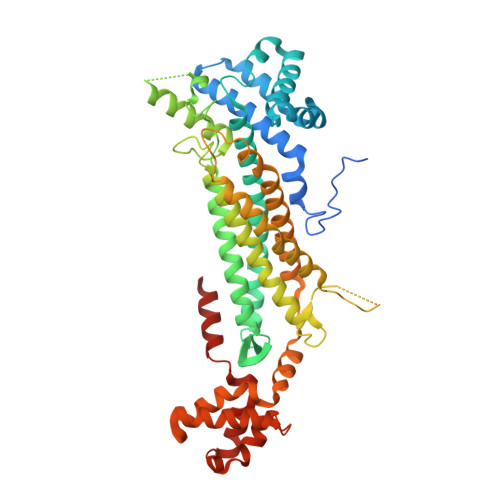Crystal structure of the nitrosuccinate lyase CreD in complex with fumarate provides insights into the catalytic mechanism for nitrous acid elimination
Katsuyama, Y., Sato, Y., Sugai, Y., Higashiyama, Y., Senda, M., Senda, T., Ohnishi, Y.(2018) FEBS J 285: 1540-1555
- PubMed: 29505698
- DOI: https://doi.org/10.1111/febs.14429
- Primary Citation of Related Structures:
5XNY, 5XNZ - PubMed Abstract:
Enzymes belonging to the aspartase/fumarase superfamily catalyze elimination of various functional groups from succinate derivatives and play an important role in primary metabolism and aromatic compound degradation. Recently, an aspartase/fumarase superfamily enzyme, CreD, was discovered in cremeomycin biosynthesis. This enzyme catalyzes the elimination of nitrous acid from nitrosuccinate synthesized from aspartate by CreE, a flavin-dependent monooxygenase. Nitrous acid generated by this pathway is an important precursor of the diazo group of cremeomycin. CreD is the first aspartase/fumarase superfamily enzyme that was reported to catalyze the elimination of nitrous acid, and therefore we aimed to analyze its reaction mechanism. The crystal structure of CreD was determined by the molecular replacement native-single anomalous diffraction method at 2.18 Å resolution. Subsequently, the CreD-fumarate complex structure was determined at 2.30 Å resolution by the soaking method. Similar to other aspartase/fumarase superfamily enzymes, the crystal structure of CreD was composed of three domains and formed a tetramer. Two molecules of fumarate were observed in one subunit of the CreD-fumarate complex. One of them was located in the active site pocket formed by three different subunits. Intriguingly, no histidine residue, which usually functions as a catalytic acid in aspartase/fumarase superfamily enzymes, was found around the fumarate molecule in the active site. Based on the mutational analysis, we propose a catalytic mechanism of CreD, in which Arg325 acts as a catalytic acid.
Organizational Affiliation:
Department of Biotechnology, Graduate School of Agricultural and Life Sciences, The University of Tokyo, Japan.















